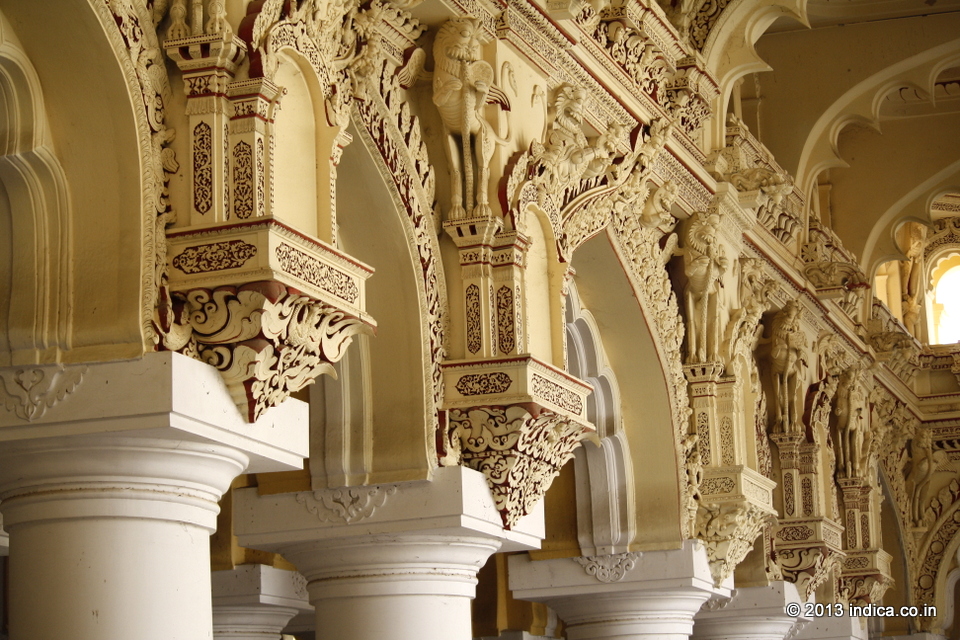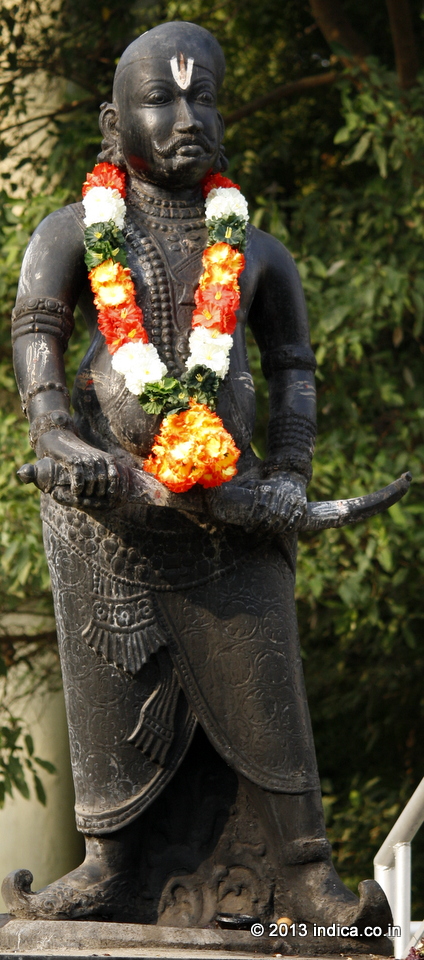Thirumalai Nayakar Mahal
I
n the tourist itinerary of Madurai, Tamilnadu, India, Thirumalai Nayakar Mahal takes the second place, after the Meenakshi Temple. This heritage monument is under the control of Tamilnadu Archeological Department and so is kept in impeccably neat condition for the flow of tourists. You will be absorbed by the structural marvel at the very first sight of the inside of this former Palace of ancient Madurai Ruler, Thirumalai Nayakar.In the Nayak Dynasty, Thirumalai Nayakar was the famous King of Madurai during 1623-1645 AD. This was his residential palace (You can not but envy the Royal living in those days) built in 1636.
It is an interesting story how the Nayaks became rulers of Madurai. Krishna Devaraya, the Emperor of Vijayanagar, conquired Madurai. He sent one of his Generals, Nagama Nayak to quell the riots there. Nagama Nayak took complete control of Madurai and eventually declared himself as an independent ruler.

Krishna Devaraya was furious and sent Viswanatha Nayak, son of Nagama Nayak to arrest his father. Young Viswanatha Nayak proved his loyalty to the Emperor and produced Nagama Nayak at the Royal Court, but explained the circumstances at Madurai, to justify the action taken by his father. Pleased by the brave deed of Viswanatha and in honor of his loyalty, the Emperor released his father and also crowned Viswanatha Nayak as King of Madurai in 1530 A.D.
Thirumalai Nayakar was a devotee of Madurai Meenakshi Amman and has structured many artistic contributions to the temple, like Rajagopuram (entrance tower). He designed the Palace with the help of an Italian Architect. Madurai was in a glorious period then and merchants, travelers, and visitors from far-off places like Rome, Italy and Greece were roaming in the streets along with the locals.
The Palace we are seeing now is just a minor portion of the original construction. The legend goes Chokkanatha Nayak, the grandson of Thirumalai Nayakar, demolished the palace and took away many precious materials like ivory, gold etc, to build another palace of his own in Trichirappalli.
The stucco work of the Mahal is a real architectural wonder – using Chunnam (lime powder got by burning seashells) to give a strong and glossy surface, withstanding centuries. The beautiful paintings of both Saivist and Vaishnavist mythology; the wooden carvings; the Throne Chamber; the breath-taking Octagonal dome without any supporting girders; the gigantic pillars of 5 feet diameter etc. - stand mute witnesses of the superior taste of Thirumalai Nayakar.
Many may not know that Thirumalai Nayakar excavated a large area of land to take out mud for making bricks used in the Mahal, to become a huge pond – Mariamman Theppa Kulam of today. It is here the annual Theppam (float festival) of Meenakshi Amman takes place in January/February with a lot of fan-fare.
Timings of Visit: 9 am to 5 pm – all days; Entrance fee – Re.1/-; Camera fee: Rs.50; Light and Sound show about Thirumalai Nayakar and Silapathikaram (Tamil Epic) – English 6.45 pm; Tamil 8.15 pm; fees – Adults Rs.10 and Children Rs.5/
Getting there to the Mahal: Bus Routes – 11,11A,17 & 38 from Periyar Bus-stand; 1 km southeast of Meenakshi Temple; walk – 20 minutes; Auto : Rs.50; Cycle-Rickshaw : Rs.30. (fancied by foreigners as “smoke-less” vehicle.)

Thirumalai Nayakar statue at Thirumalai Nayakar Mahal
Thirumalai Nayakar statue at Thirumalai Nayakar Mahal
